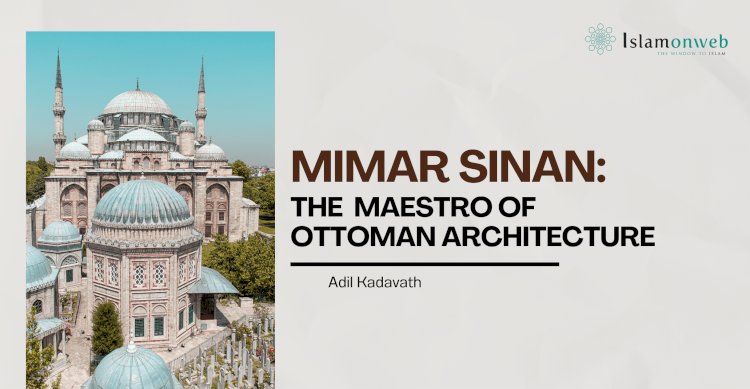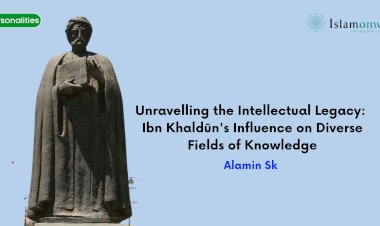Mimar Sinan: The Divine Maestro of Ottoman Architecture
Mimar Sinan stands as one of the greatest engineers and architects of the classical Ottoman era. Over the course of his extraordinary career, which spanned nearly fifty years, he designed and oversaw the construction of more than 400 structures across the Ottoman Empire. A master of classical construction, Sinan was a pioneer among the finest architects of the Ottoman period.
Born in Ağırnaz, Turkey, around 1490, and passing away in Constantinople in 1588, Sinan became the most celebrated architect in Ottoman history. His refined architectural concepts, honed through the construction of mosques and civic buildings, laid the foundation for almost all subsequent Turkish civic and religious architecture.
It is believed that Sinan’s parents were Greek or Armenian Christians. A manuscript preserved in the Topkapi Palace Library mentions that his father’s name was Abdülmennan. Some accounts suggest that Muslim converts would often refer to their non-Muslim fathers as "Abdülmennan." Sinan initially worked as a carpenter and stone mason under his father's guidance. However, in 1512, he was recruited into the Janissary corps. After embracing Islam, Sinan—whose Christian name had been Joseph—committed his life to the service of the Ottoman royal family, particularly Sultan Süleyman I.
Following a period of education and rigorous training, Sinan entered the Ottoman army as a construction officer and eventually rose to the position of head of artillery. He was later promoted to the rank of Janissary Ağa, equivalent to the Sergeant-at-Arms of the Royal Guard. In 1539, Grand Vizier Chelebi Lütfi Pasha appointed him as the Chief Architect of the Abode of Felicity (Topkapi Palace). In this role, Sinan was responsible for overseeing construction projects throughout the empire, as well as designing and building roads, bridges, aqueducts, and other vital infrastructure.
As a construction officer in the Ottoman army, Mimar Sinan travelled extensively across the empire, visiting Egypt, Persia, Baghdad, and Damascus, among other regions. His remarkable designs and masterful constructions soon earned him the title "Sinan the Architect," and in 1538, he was appointed Chief Architect of the Sultan’s administration.
Throughout his prolific career, Sinan designed several magnificent mosques, most notably the Selimiye Mosque in Edirne, Turkey, along with a vast number of other structures. His contributions included the construction of 34 palaces and mansions, 48 caravansaries, 84 grand mosques, 51 smaller mosques, three hospitals, 57 madrasahs (theological schools), seven Qur'anic schools, 22 mausoleums, and many more civic and religious buildings. His works had a profound impact on the Muslim world, inspiring countless architects and shaping the architectural identity of the Ottoman Empire.
Sinan’s career unfolded during the golden age of the Ottoman Empire, particularly under the reign of Sultan Süleyman the Magnificent. For over fifty years, he led the Corps of the Royal Architects, overseeing construction and infrastructure projects across the empire’s major cities, including Istanbul, Edirne, and Iznik, as well as numerous smaller provinces.
Under the patronage of the Sultan, his family, and various high-ranking Ottoman officials, Sinan was responsible for building and renovating an extraordinary range of structures—mosque complexes, individual mosques, madrasahs, bazaars, public baths, kitchens, palaces, hospitals, fountains, bridges, canals, and tombs.
Hailed as the "Divine Maestro" of his time, Sinan’s monumental creations, particularly the Selimiye Mosque in Edirne and the Süleymaniye Complex in Istanbul, have adorned the city skylines for centuries. These architectural masterpieces continue to captivate visitors, architects, and researchers from around the world, standing as timeless symbols of Ottoman ingenuity and artistic excellence.
Throughout his life, he maintained a deep fascination with the Hagia Sophia, the grand Byzantine cathedral renowned for its expansive yet fragile dome—a structure he once helped repair. Inspired by the Hagia Sophia, Sinan sought to create vast, unified interior spaces capped by stable, majestic domes. Although his religious tradition differed from that of the Byzantine builders, he often emulated the spirit of Hagia Sophia in his own designs, with subtle adaptations to suit Islamic architecture.
Significantly, Sinan was the first Ottoman architect to leave behind written records, expressing his desire to be remembered positively by future generations. He was laid to rest in a tomb he designed for himself within the grounds of the Süleymaniye Complex.
Today, he is recognised as the most prominent figure in the history of Islamic art and architecture—standing on equal footing with the celebrated artists and architects of the European Renaissance.
Sinan’s extensive military background shaped his architectural approach, favouring practical, resilient designs over purely theoretical constructs. Under the reigns of Sultan Süleyman the Magnificent, Selim II, and Murad III, Sinan served as the Chief Architect of the Ottoman Empire for nearly fifty years. His first major royal commission was the Haseki Sultan Complex, built for Hürrem Sultan, the wife of Süleyman the Magnificent.
Over the course of his long career, Sinan designed and built hundreds of structures throughout the Ottoman Empire. Among all his works, three stand out as his crowning masterpieces: the Şehzade Mosque in Istanbul, the Süleymaniye Mosque in Istanbul, and the Selimiye Mosque in Edirne. These monumental works embody the height of his architectural genius and continue to inspire awe to this day.
Selimiye Mosque
The Selimiye Mosque in Edirne, completed by Mimar Sinan when he was eighty years old, is widely regarded as the pinnacle of classical Ottoman architecture. Sinan incorporated exceptionally beautiful interiors, drawing inspiration from the designs of the Hagia Sophia. Notably, he refined the structural design by eliminating several ancillary spaces around the main dome’s supporting piers, thereby creating a more unified and spacious interior.
It is reported that Sinan intended to surpass the dome of the Hagia Sophia. In fact, when measured from its base, the Selimiye Mosque's dome stands higher than that of the Hagia Sophia. However, when viewed from the ground, the Hagia Sophia's dome appears higher. The Selimiye Mosque’s four slender minarets, rising from each corner, are among the tallest in the Muslim world, enhancing the mosque’s grandeur and spiritual presence.
Şehzade Mosque
The Şehzade Mosque in Istanbul was completed in 1548. It was built to honour Şehzade Mehmed (1522–1543), the beloved son and heir of Sultan Süleyman the Magnificent and Hürrem Sultan, who tragically died from smallpox at a young age while serving as governor of Manisa. Deeply grieved by his son's passing, Sultan Süleyman commissioned a fitting memorial in his name.
Mimar Sinan created the Şehzade Mosque as his first major masterpiece. In its design, he drew inspiration from earlier structures such as the Piri Pasha Mosque in Hasköy and the Fatih Pasha Mosque in Diyarbakır. The mosque’s refined architecture would later influence Sinan’s students, including Sedefkar Mehmed Agha, the architect of the famed Sultan Ahmed Mosque (Blue Mosque).
Süleymaniye Mosque
Sultan Süleyman the Magnificent commissioned his royal architect, Mimar Sinan, to construct an imperial mosque to honour his reign as one of the greatest monarchs of his era. The mosque was built on one of Istanbul’s prominent hills facing the Golden Horn, a major inlet of the Bosphorus. Sultan Süleyman ensured that Sinan had all the necessary materials and resources for its construction.
Work on the Süleymaniye Mosque began around 1550, and it took Sinan and his team of architects and builders approximately seven years to complete. In this grand project, Sinan introduced the innovative use of half-cube roofs, a design inspired by the Hagia Sophia. He is said to have understood the dome's perfect circular form as a symbol of the ideal nature of God.
Legacy Across the World
Much of Sinan’s architectural brilliance continues to enchant people across the world. The number of admirers of his works has only grown over time. Among the many remarkable structures attributed to him are:
- The Mausoleum of Grand Admiral Hayreddin Barbarossa in Beşiktaş, Istanbul
- The Mihrimah Sultan Mosque (completed in 1548)
- The Mehmed Paša Sokolović Bridge (1575) across the Drina River in Višegrad, Bosnia and Herzegovina (now a UNESCO World Heritage Site)
- Another Mihrimah Sultan Mosque (built in Üsküdar)
- The Osman Shah Mosque in Trikala, Greece
These enduring monuments stand as a testament to Mimar Sinan’s timeless genius and his profound impact on the architectural heritage of the Muslim world.
About the author:
Adil Kadavath is a degree scholar at Darul Huda Islamic University, studying in the Department of ʿAqīdah and Philosophy. He is also pursuing a B.A. in History at IGNOU. His research areas include Religious Studies, Indian History, and Islamic History.
References:
- Keskin, M. "Narratives on Architects and Builders in Turkish Culture (Türk Kültüründe Mimar Anlatıları)." Turkiyat Mecmuasi 34, no. 1 (2024): 353–403.
- Mimar Sinan - Genius of Islamic Architecture.
- Türkmenoğlu, B. "Construction Tools Used by Ottoman Architects and Engineers in the Classical Period."
- Mimar Sinan (“Architect Sinan”) - Architecture Planning and Preservation - Oxford Bibliographies.
- Aydin, M. S. "Mimar Sinan: The Architect of the Ottoman Empire." The Journal of the Society of Architectural Historians 56, no. 4 (1997): 421–439.
Disclaimer
The views expressed in this article are the author’s own and do not necessarily mirror Islamonweb’s editorial stance.
























Leave A Comment